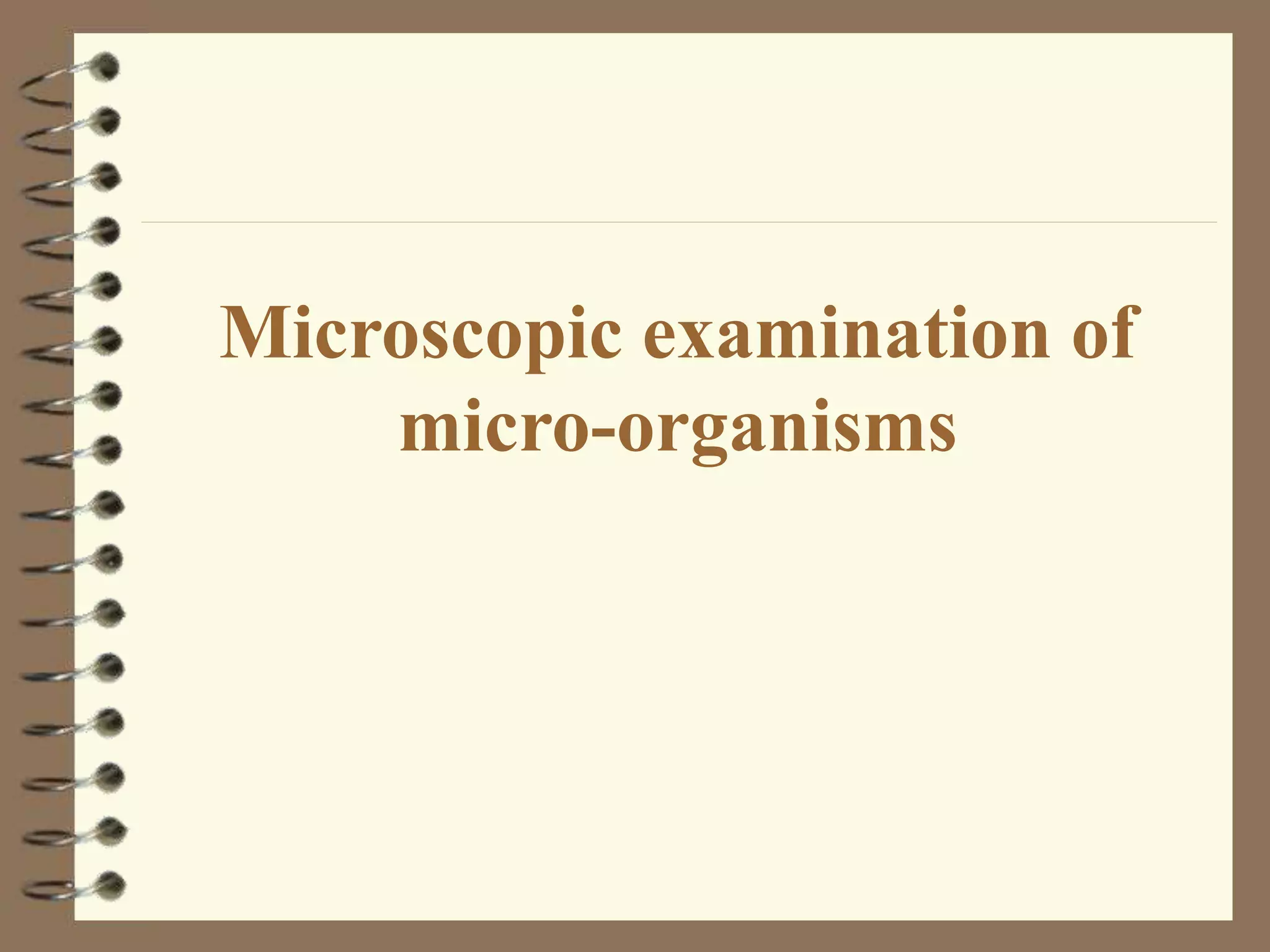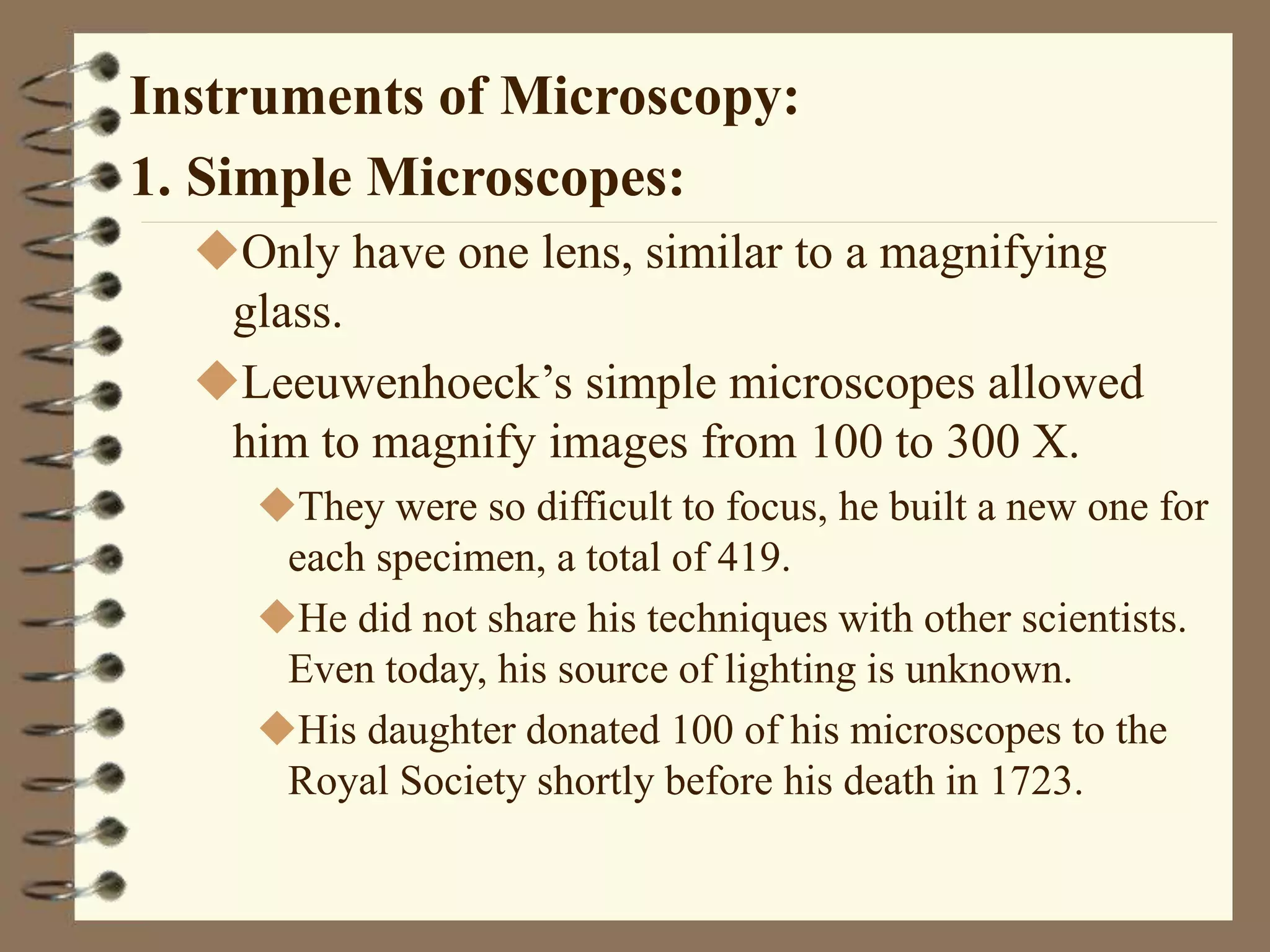This document discusses various microscopic techniques used to view micro-organisms. It describes simple microscopes developed by Leeuwenhoeck in the 1600s that could magnify up to 300x. Compound light microscopes were later developed using multiple lenses, with modern versions using visible light. Additional techniques were developed like darkfield, phase contrast, and fluorescence microscopy to view unstained or live specimens. Electron microscopes using electron beams instead of light allowed viewing structures too small for light microscopes like viruses. Scanning tunneling and atomic force microscopes developed in the 1980s provide even higher resolution atomic level views of surfaces.










